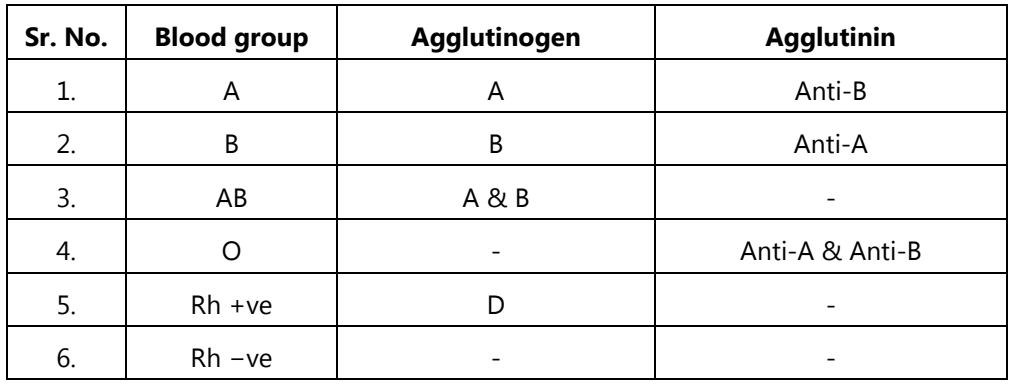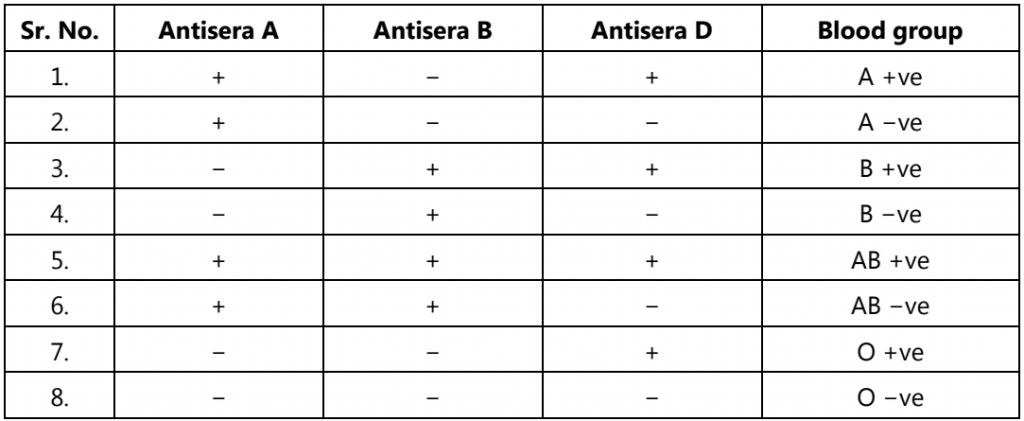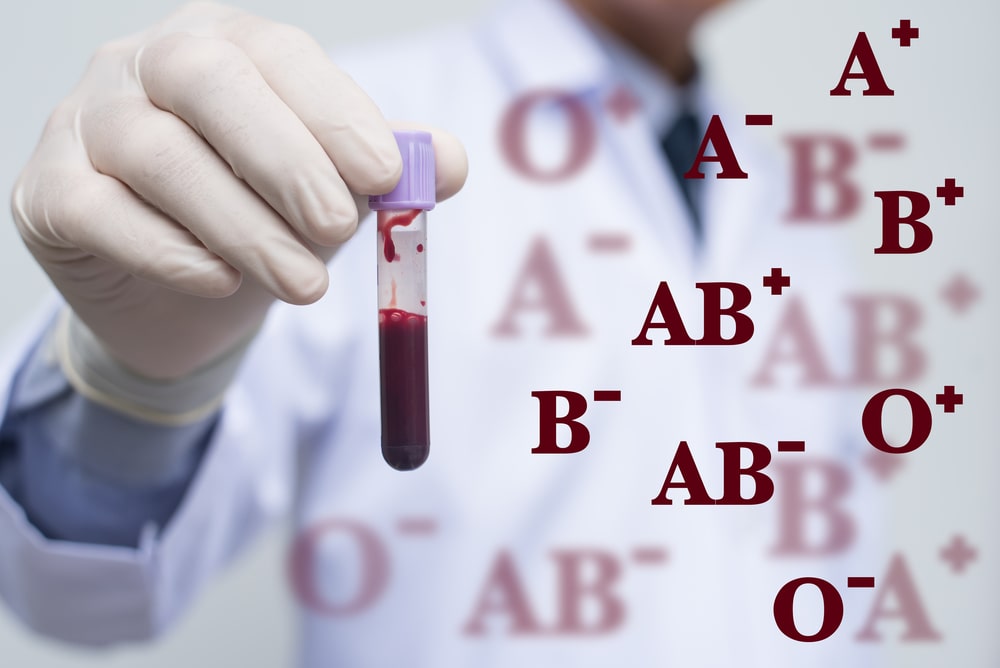Aim: To determine own blood group by using the ABO system.
Requirements: Sterile disposable needle (26G), cotton swab, 70% alcohol, or any other suitable marketed antiseptic, clean and dry glass slides, glass dropper, and antisera kit.
Principle: As per the ABO blood grouping system, human blood is mainly divided into four groups ‘A’, ‘B’, ‘AB’, and ‘O’.
These groups are made based upon the presence or absence of antigens (also called agglutinogens) present on the surface of RBCs and antibodies (also called agglutinins) present in the plasma. Agglutinogens and agglutinins are of two types viz. A & B and Anti-A & Anti-B respectively.
The process of clumping followed by hemolysis of RBCs occurs due to a reaction between specific agglutinogens and agglutinins. This reaction is also called agglutination.
In addition, there may be the presence of one more antigen called D-antigen (Rh factor) on the surface of RBCs which constitutes the Rh system. The presence or absence of D-antigen designates the blood as Rh +ve or Rh –ve respectively.
The ABO blood grouping system is shown in the following table.

For determination of blood group, the commercially available kit is widely used which includes three agglutinin-containing solutions viz. antisera A, antisera B, and antisera D. The RBCs i.e. present in the blood sample is made to react with these antisera. The slide is then observed for agglutination which occurs as a result of the reaction between similar agglutinin and agglutinogen.
Procedure:
- Divide the glass slide into three parts and mark them as anti-A, anti-B, and anti-D.
- Get a finger prick under aseptic conditions and add two drops of blood in each divided part of the slide.
- Put one drop of each anti-serum at the respective part of the slide and mix it with blood.
- Wait for 8-10 minutes and observe the slide for agglutination reaction i.e. clumping and hemolysis of red cells.
- Determine the blood group based upon agglutination status with antisera as mentioned in the table below.

(‘+’ means ‘presence of agglutination’ and ‘−’ means ‘absence of agglutination’)
Observation Table

Result: The blood group was found to be …….
Make sure you also check our other amazing Article on : Determination of Clotting Time
